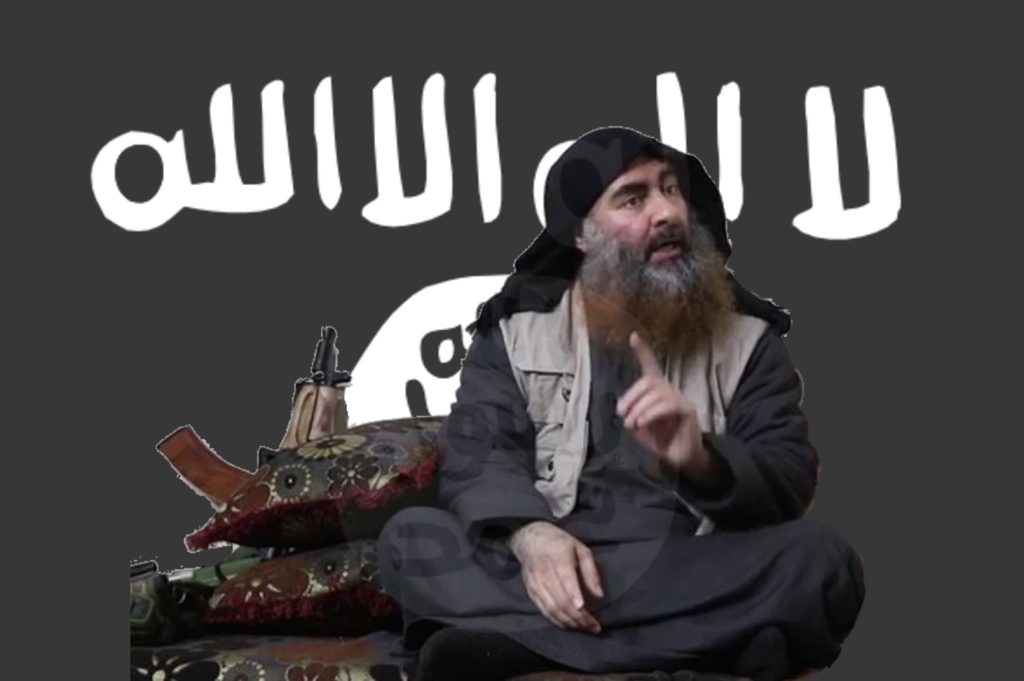On Saturday October 26, 2019, Abu Bakr al-Baghdadi, the now former leader of ISIS, was killed in a raid on his compound by an American task force acting upon information provided by the Syrian Kurds.
President Trump’s boastful announcement of the news the following morning was unprecedented in its level of detail. He claimed that “U.S. personnel were incredible” and that al-Baghdadi “died like a dog. He died like a coward.” Trump continued, stressing the number of ISIS members that were killed and thanking Russia, Turkey, Syria, Iraq, Syrian Kurds, government intelligence and military professionals, and the involved soldiers.
On Wednesday October 30th, the head of US Central Command, General Kenneth F. McKenzie Jr., held a press release in which he detailed the nature of the assault. He stressed the humanity with which the soldiers treated civilians in the compound and the danger that ISIS still poses.
The following day ISIS acknowledged the death of Abu Bakr al-Baghdadi and designated their new spokesman as Abu Ibrahim al-Hashimi al-Qurayshi. The name is believed to be a nom de guerre—an assumed name. On Friday November 1st, Trump claimed to already know the new leader’s identity.
The attack was generally explained by President Trump on Sunday and specifically detailed on Wednesday by General McKenzie. Baghdadi’s compound was located 4 miles from the Turkish border in Syria in a province mostly unoccupied by American forces. According to General McKenzie, troops repeatedly urged those inside the compound to come out peacefully. The noncombatants, including eleven children, who did so were humanely treated, detained, and released. Five members of ISIS inside the compound refused to surrender and were killed after threats of force. Baghdadi was discovered inside a tunnel later, killing himself and two children. Originally the report stated three children—President Trump’s account also stated three children—but it has since been updated to two. General McKenzie also notes that “Baghdadi’s remains were buried at sea in accordance with the laws of armed conflict.”
After gathering information and using DNA sampling to confirm that the target was in fact Baghdadi, the compound was cleared and destroyed with U.S. standoff munitions. While no American soldiers were injured during the process, a military dog was harmed by exposed electrical wires in the tunnel al-Baghdadi fled into.
Under Baghdadi’s leadership, ISIS committed horrific atrocities. In his initial announcement, President Trump specifically cited the murder of four American citizens: James Foley, Steven Sotloff, Peter Kassig, and Kayla Mueller. He also cited the public murder of the Jordanian Air Force Pilot Muath al-Kasasbeh and more generally, “the execution of Christians in Libya and Egypt, [and] the mass murder of the Yazidis,” a minority group in the Middle East.
While the assassination of the ISIS leader is a subject of celebration for many senior officials in the US, its actual impact on the operational capacity of the terrorist organization is unclear. In talks with The New York Times, counterterrorism experts voiced their expectations of fealty pledges to the new leader from international ISIS affiliates. Days before the announcement of his death, Jenna Jordan, Associate Professor of International Affairs at Georgia Institute of Technology and author of a book on targeting leadership in terrorist organizations, told TIME that the assassination would not likely result in the demise, debilitation, or decline of the terrorist cell.
Jason Theisen
Staff Writer
Graphic: Ryan Rhew

